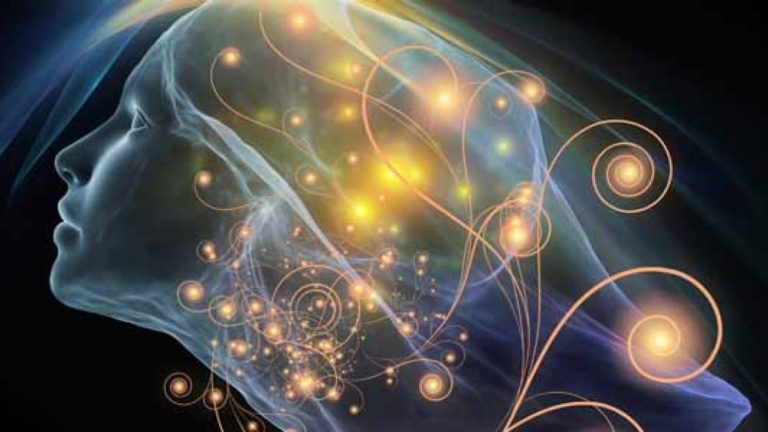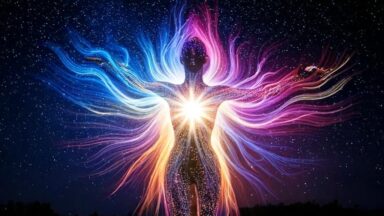Who is Sophia in Gnosticism? Goddess of the Divine Feminine

Sophia, the embodiment of divine wisdom in Gnostic tradition, graces us with a profound understanding of the feminine aspect of the cosmos. Gnosticism—interwoven with early Christianity and enriched by Hellenistic philosophy—is more than a religion; it is a journey toward self-realization and communion with a deeper reality. This sacred knowledge, known as Gnosis (from the Greek “to know”), was lovingly passed down through myths found in Gnostic texts such as those discovered in the Nag Hammadi library.
The Myth of Sophia: The Divine Feminine
Let us immerse ourselves in the enchanting myth of Sophia, whose story illuminates the depths of divine wisdom and the sacred feminine.
Sophia’s Origin in the Pleroma
In Gnostic cosmology, Sophia is the radiant feminine personification of divine wisdom and the youngest of the Aeons—emanations of the ultimate reality known as the Monad or Pleroma. Dwelling in the spiritual fullness of the Pleroma, Sophia is intimately connected with the unknowable Father’s brilliance, born of the twin powers of Depth and Silence.
The Descent and Creation of the Material World
Compelled by an intense yearning to know the Father’s essence, Sophia emanates without her consort, creating a disturbance that leads to her descent from the Pleroma. In her fall, she becomes entwined in the material world, inadvertently giving birth to the Demiurge, often called Yaldabaoth. This ignorant and arrogant entity fashions the material universe, unaware of the spiritual realms above. In certain Gnostic scriptures like the Apocryphon of John, the Demiurge is equated with the God of the Old Testament.
Sophia’s descent introduces imperfection, suffering, and ignorance into existence, as the material world is shaped through her unintended actions.
Sophia’s Presence and Redemption
Yet even in her descent, Sophia’s luminous essence continues to touch the world, offering a path toward spiritual awakening and redemption.
Infusing Divine Wisdom into Humanity
Despite her fall, Sophia remains ever-present in the world, infusing it with beauty and spiritual potential. She conceals divine consciousness within humanity, nurturing the possibility of spiritual awakening. Through her boundless compassion, Sophia aids souls in seeking Gnosis to ascend back to the spiritual realms.
The Feminine Heart of the Earth
Sophia embodies the soul of the world—sometimes known as the anima mundi or Gaia—bridging the material and spiritual realms. Her myth illustrates the essential role of the Divine Feminine in overcoming ignorance and reuniting with the spiritual source. Embracing Sophia highlights the importance of balancing masculine and feminine energies to achieve wholeness and enlightenment.
Sophia Across Cultures and Traditions
Her timeless wisdom echoes across different cultures and spiritual paths, revealing universal truths about the Divine Feminine.
Wisdom Personified in Various Beliefs
- Hebrew Tradition: In the Book of Proverbs, wisdom is personified as a woman, reflecting aspects of Sophia.
- Christian Gnosticism: Texts like the Pistis Sophia portray her seeking redemption, guided by Jesus Christ. The Valentinian Gnostics emphasize her restoration through the intervention of the Savior, often identified with the Logos or Christ.
- Eastern Traditions: In Hinduism, she parallels Shakti, the dynamic feminine energy. In Buddhism, she resonates with the compassionate bodhisattva Guanyin.
- Philosophy: Plato explored ideal forms, linked to the Gnostic understanding of the Pleroma and the emanation of Aeons.
Psychological Interpretations
- Carl Jung: Identified Sophia as an archetype of the anima, representing the feminine aspect within the male psyche and a bridge to the collective unconscious. Integrating Sophia symbolizes the process of individuation and psychological wholeness.
- James Hillman: Expanded on Jung’s ideas, viewing Sophia as embodying wisdom, compassion, and the muse in psychological development.
Modern Psychological Understanding
In the realm of modern psychology, Sophia’s story offers profound metaphors for understanding the journey of the soul and the integration of the self.
Sophia as a Reflection of the Psyche
The myth of Sophia provides deep insights into the human psyche and spiritual evolution. Carl Jung saw her story as a reflection of the collective unconscious and a guide for personal growth. The narrative illustrates the descent into the depths of the unconscious (the material world) and the subsequent ascent toward self-realization and unity with the divine.
Sophia’s journey mirrors the psychological process of confronting and embracing the shadow self, leading to enlightenment. This transformative path emphasizes balancing masculine and feminine energies within, fostering a holistic approach to spiritual growth.
Influence on Religious Thought
Sophia’s profound impact can be traced through the evolution of religious ideas and spiritual teachings throughout history.
Early Christianity and Gnostic Scriptures
Early Church Fathers, such as Irenaeus, criticized Gnostic teachings, including the myth of Sophia, viewing them as heretical to orthodox Christianity. Despite this, elements of Sophia’s wisdom can be found in Christian mysticism and the concept of the Holy Spirit, sometimes associated with the feminine aspect of the Trinity.
Suppression and Rediscovery of the Divine Feminine
The early Roman Catholic Church largely suppressed the recognition of the Divine Feminine, leading to the marginalization of Sophia’s role in mainstream Christian theology. However, the discovery of Coptic texts like the Gnostic Gospels and the Pistis Sophia has renewed interest in her significance within spiritual traditions.
The Path of Ascent: Finding the Way Back Up
Her myth serves as a beacon, illuminating the path back to unity with the divine source.
Embracing Divine Wisdom
Sophia’s myth encourages us to embrace divine wisdom and seek spiritual awakening. By recognizing the presence of Sophia within, we can overcome ignorance and ascend toward higher consciousness. The journey involves uniting the masculine and feminine aspects of the self, transcending duality, and attaining Gnosis.
Personal Transformation and Unity
In Gnostic belief, salvation is achieved through knowledge and inner enlightenment rather than external rituals or dogma. Sophia serves as a guide and catalyst for this inner transformation, offering a path to reconnect with the divine source. This unification leads to becoming a complete person, filled with the knowledge of the transcendent, unified light.
Sophia, as the Gnostic goddess of wisdom, embodies the vital role of the Divine Feminine in spiritual enlightenment. Her myth conveys profound truths about the nature of reality, the human soul, and the path to self-realization. By understanding Sophia’s story and embracing the wisdom she offers, we can embark on a transformative journey toward unity with the divine.
As Dr. Stephan Hoeller, a prominent Gnostic scholar, beautifully states:
“Those favored by the grace of Sophia may devote their lives to offering active service in the public arena, or they may simply bring the compassionate light of Sophia to bear upon the private human tasks of their daily lives.”
Further Exploration
Discovering the higher self is an essential part of ascension. The following programs can support you on this journey:
What are Rituals?

Early recordings of humankind denote an endless array of rituals: rituals are sequences of repeatable acts, called “rites”, performed by way of specific methodology adhering to certain occasions. From self-care routines to marriage ceremonies to political traditions, rituals hallmarked by specific cultures vary widely, yet relate in the sheer nature of their existence. With the passing of generations, rituals have become sidelined in many cultures, and as such, misunderstood.
By demystifying the concept of rituals and employing the power of purposeful ceremony, we are able to unlock the door of opportunity for renewal, consistency, and mindfulness within our own lives.
What Are Rituals?
Often mistaken for habits, rituals involve the execution of conscious and deliberate actions. Habitually, I roll out of bed and brush my teeth. There is very little thought involved in this routine; on more than one morning, I have performed this act and later in the day had no memory of partaking in the experience (that said, this has become ingrained into my everyday life, and therefore I trust with every cell in my being it was checked off the list). According to Charles Duhigg, author of The Power of Habit, once our brains are conditioned to incorporate a habit, we use little to no brainpower on that particular aspect of our day; it is almost as if we are sleeping during our waking hours.
Habitual Hardwiring
Habits and routines are hardwired into our minds at a young age. I can remember being sent home each day in third grade with two math worksheets, one division and the other multiplication. To my distaste, this dose of algebraic prescription was swallowed and completed before playtime ensued. Then followed dinner, then bath time, then 30 minutes of reading before bed. The daily incorporation of math problems and a set dinnertime, while seemingly mundane, provided structure and a sense of safety, which has served me far into adulthood.
Our habits, while capable of being orchestrated without much thought, serve us greatly as a source of stabilization in an often-unpredictable world.
Like habits, rituals offer a sense of grounded-ness and familiarity. Rituals, unlike habits, require us to become aware and attuned to specific moments in time, whether it be preparing the physical body for the day ahead or welcoming the dawn of a new season. For thousands of years, cultures around the world have preserved and continue to create such rituals.
Beyond Fear-Based Rituals
The evolution of society has immensely impacted rituals today. Understandably and thankfully, views on many subjects such as mortality have shifted, stamping out rituals such as human sacrifice, once common in Aztec and Viking cultures. Over the course of history, such intense and dramatic acts have created fear around the concept of rituals. The actual ritual itself becomes obsolete, as it no longer serves a purpose within the architecture of newly structured norms.
Rituals are Inherently Mindful
The pace of our existence has dramatically picked up speed and as such, our energy and attention are more expended upon habit. For instance, it is not uncommon to make a habit of hitting the steam room after a tough workout at the gym. What today likely takes the average health club goer 5-15 minutes shares commonality with once-lengthy and honored rituals around the globe. According to Dr. Joanne Berry, researcher and Roman historian, visits to public baths such as the Forum Baths in Pompeii served as time for people to mindfully cleanse, and also served as social and political meeting grounds; said ritual laid the foundation for many historical implications still being studied and unearthed today. In ancient Mesoamerican culture, a steaming ritual called “temazcal” served many purposes. A combination of heated rocks, meditation and chanting inside of a mortar structure originally served as a ritual during important events, such as childbirth, to call in a sense of rejuvenation.
Due to the formation of habits, there is a basic “to-do” framework we adhere to on a daily basis. Many of us know exactly how long a routine chock full of automated acts such as above takes us in order to seamlessly arrive at the office, an appointment, or wherever the wind blows in a timely manner. Efficiency can lead to the extraction of the presence of consciousness in our day-to-day acts. According to Richard J. Reidly, author of Eternal Egypt: Ancient Rituals for the Modern World, priests and priestesses in modern Egypt adhered to a daily morning ritual consisting of 32 ceremonious acts. In this day and age, carving out a window of precious time to execute such seems daunting, and frankly impossible.
Why are Rituals Important?
“A ritual is the enactment of a myth. And, by participating in the ritual, you are participating in the myth. And since myth is a projection of the depth wisdom of the psyche, by participating in a ritual, participating in the myth, you are being, as it were, put in accord with that wisdom, which is the wisdom that is inherent within you anyhow. Your consciousness is being re-minded of the wisdom of your own life. I think ritual is terribly important.” –Joseph Campbell
Rituals are often markers or catalysts for energetic shifts. Rituals also assist in renewal of self, support connection within community and keep tradition alive in a conscious way. On may levels, rituals help us become more in tune with what is truly meaningful; that which is of so much importance it stands the test of time.
The gerontology expert Rhonda P. Curtis wrote, “ritual expands our horizons to aspects of life beyond daily requirements.”” Rituals give the events we experience in our lives meaning, and our lives themselves a sense of purpose. Because a ritual requires preparation and thoughtfulness, they help us shift from “to-do” mode to “into doing” whatever may be required for the completion of your chosen ritual experience.
The Lasting Impact of Rituals
Take the full moon, for example. A quick glance in the sky can leave us breathless for a moment, and if we are lucky, we could yield a somewhat blurry photo to publish on Instagram. When observed through a ritual experience, the energy of the full moon can be harnessed for your benefit to release what is no longer serving you, as well help you become a magnet for that which will spur your evolution, both of which can make a lasting impression on the way your next day, week, month unfolds.
How to Create Your Own Rituals
Start Small
Identify areas in your life in which you are either experiencing or hope to encourage shift, personally and/or within your community, and do a bit of research around existing rituals with similar focus for inspiration. Perhaps you are experiencing a shift and moving into a new apartment soon. Promotion of energetic clearing through a smudging ceremony can assist you in becoming more grounded in your home.
Maybe you are hoping to create a consistent ritual around your bedtime. Becoming more aware of how and when you unwind can enhance the potency of your sleep without being overly complicated; try adding a quick yin yoga or nidra practice before you hit the pillow.
Plan it Out
Given that rituals bring significance to daily, monthly, annual and occasional events, they can be easier to carve out time for than you may think. Setting a daily alarm or calendar reminder can be helpful, especially when first incorporating your rituals into your rhythm of life.
Daily rituals are capable of being nestled into any block of the day. For example, you may try carving out a bit of time each morning to lay the foundation for your day with a guided meditation or a ten-minute walk outside without your phone in the afternoon to reboot and reinvigorate the remainder of the workday. Make your rituals easy to begin: set up your cushion in your favorite meditation spot the night before for a morning meditation or set your alarm for 2:10pm when you typically experience a lull in your workday for your walk.
Be Patient
A study conducted at University College London proves that it takes an average of 66 days to form new behavioral patterns. It may take a bit of time to incorporate a new ritual, whether it is a daily, weekly, or yearly ritual. With some time, it will feels natural, necessary and effortless.
Stay flexible
Did you oversleep or snooze your alarm yesterday, when you had set the intention of waking up early to embrace your day with a Sunrise Yoga session? Perhaps you are traveling for work and unable to find the resources necessary for your new Wednesday evening Ayurvedic dinner ritual. Instead of becoming frustrated, give yourself credit for the awareness you possess around your ritual, and the honored space you hold for it. Celebrate this as a sign of your dedication to your newly instilled commitment.
Rituals Allow the Savoring of Shifts
Experiencing an event through the lenses of habit or circumstance (looking up at the moon) versus that of ritual (gathering a small group of friends to welcome a celestial shift) is similar to that of swallowing a cup of coffee in three gulps rather than taking mindful sips, exploring the flavor notes, layers of acidity and cradling a warm mug in receptive hands. Rituals allow for us to savor the textures of our human experience as well as the unexplainable, and remind us that we have a choice with how, when, where and why we expend and dedicate our precious energy.





































